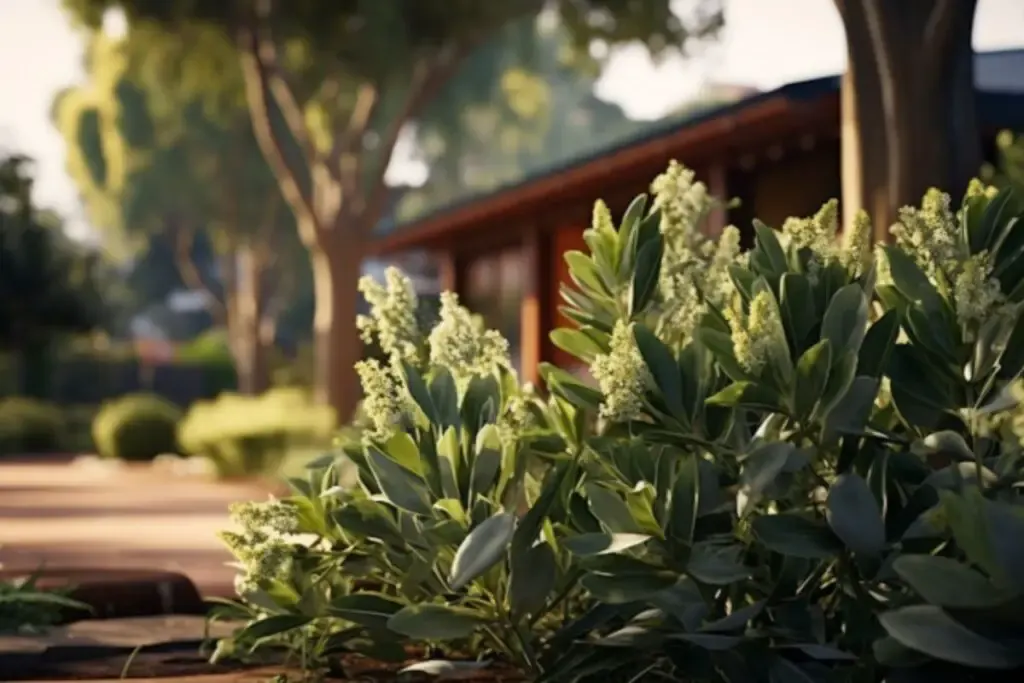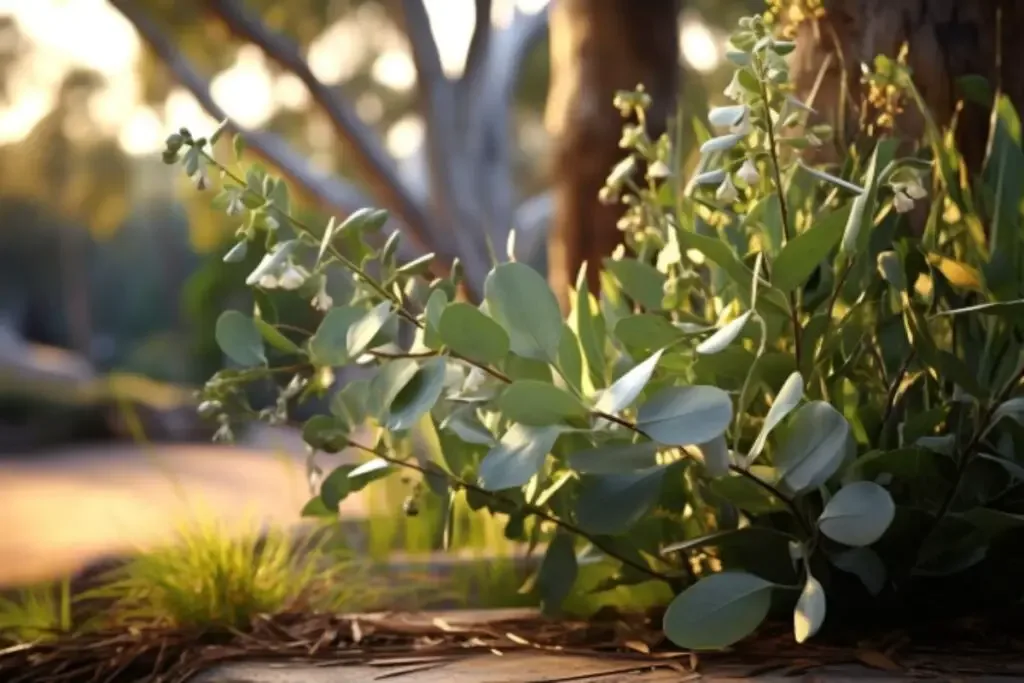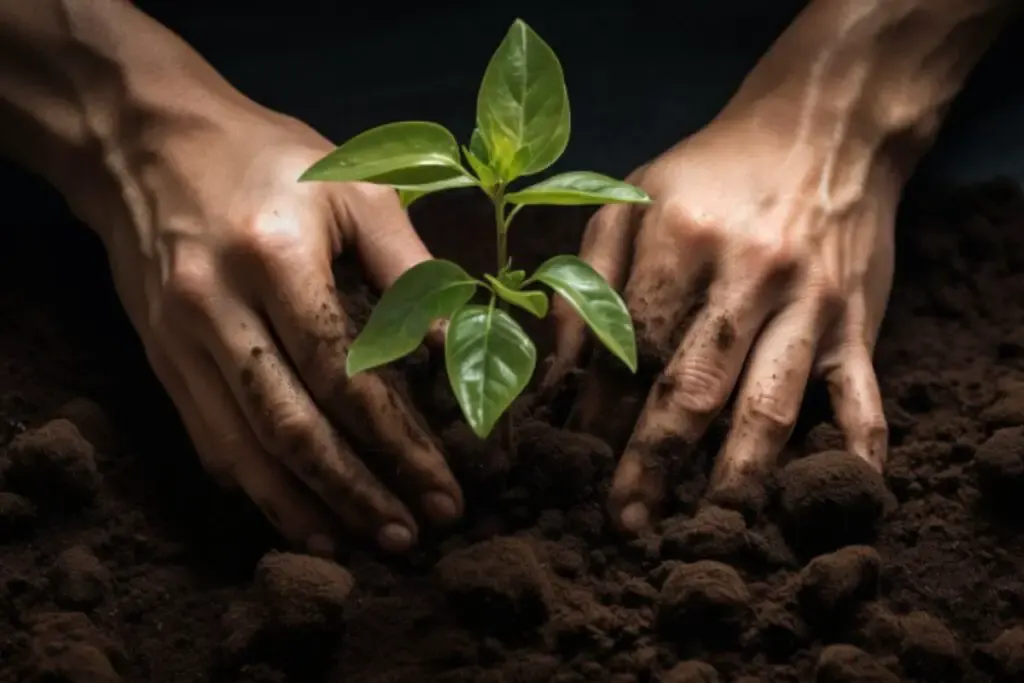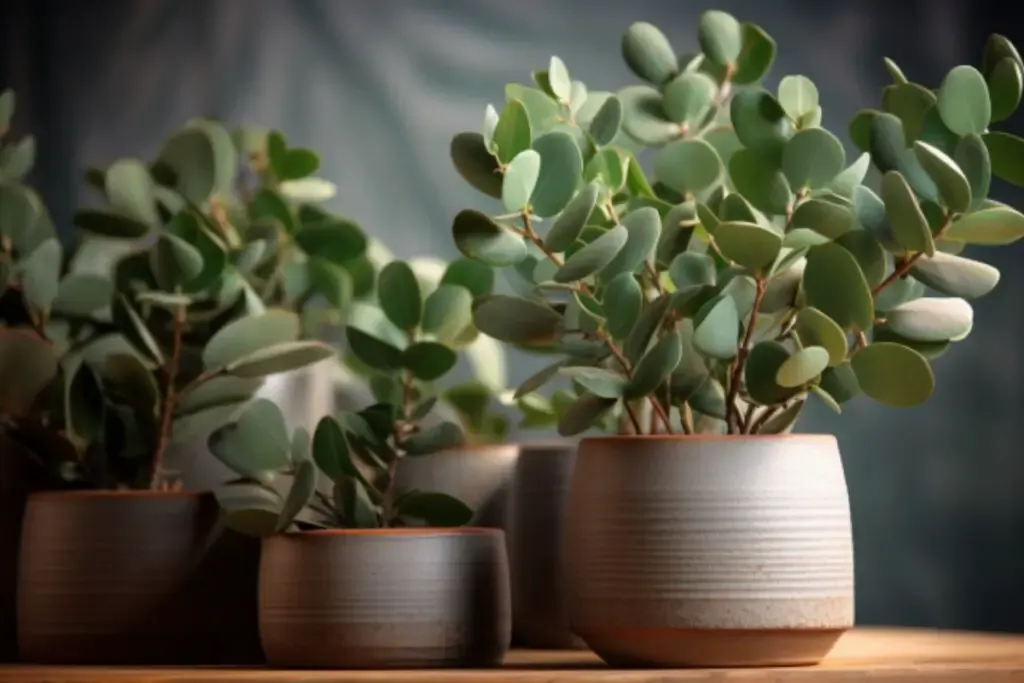Welcome to the world of Eucalyptus, a genus that brings not just diverse foliage and aromatic leaves but also a touch of the Australian wilderness to your garden or home.
As an avid gardener and blogger, I’ve grown fond of these robust plants for their beauty and versatility. Eucalyptus plants are more than just a source of koala food; they can be a striking centerpiece in a garden or a refreshing indoor companion.
Join me as we explore the joys and benefits of growing eucalyptus, and I’ll share some of my favorite varieties that have thrived under my care. Whether you’re a seasoned gardener or just starting out, there’s a eucalyptus variety that will suit your green thumb.
Benefits of Growing an Eucalyptus Plant

1. Natural Aromatherapy
The leaves of the eucalyptus plant are rich in oils that release a strong, refreshing fragrance. This scent is not just pleasant but is also known for its soothing properties, providing a natural way to relax and rejuvenate. It’s like having a spa in your backyard!
2. Wildlife Attraction
If you love birds and insects, eucalyptus plants are a great choice. They attract a variety of wildlife, including bees and birds, which can help pollinate your garden. It’s a delightful way to support local biodiversity.
3. Drought Resistance
Eucalyptus plants are incredibly resilient and can thrive in less water. This makes them perfect for drought-prone areas or for gardeners who prefer low-maintenance plants. Their ability to adapt to various conditions is truly impressive.
My Favorite Eucalyptus Varieties
Choosing the right eucalyptus variety can be as exciting as it is daunting, given the vast array available. Over the years, I’ve cultivated several types, and here are my top three favorites:
1. Eucalyptus deglupta (Rainbow Eucalyptus)

This variety is famous for its stunning, multicolored bark, which looks like a painting. It’s a fast-growing tree that adds a dramatic touch to any landscape.
2. Eucalyptus pauciflora (Snow Gum)

I adore this variety for its resilience in cold temperatures. It has beautiful, twisted branches and silvery-green leaves that add elegance to any garden, especially in snowy areas.
3. Eucalyptus polyanthemos (Silver Dollar Eucalyptus)

This is a fantastic option for indoor growth. Its circular, silvery leaves are not only visually appealing but also perfect for creating your own eucalyptus wreaths or other DIY crafts.
Eucalyptus Plant Care
Caring for eucalyptus plants can be a delightful and aromatic journey. These plants are not only attractive but also surprisingly easy to maintain, making them a favorite among gardeners.
With just a few key care tips, you can ensure your eucalyptus thrives, whether it’s gracing your garden or brightening up your indoor space.
Planting

Planting a eucalyptus requires a bit of planning and care, but it’s a straightforward process that can yield beautiful results. Here are five essential steps to get your eucalyptus off to a great start:
- Select a location that gets full sun for the majority of the day. Eucalyptus thrives in bright, sunny environments.
- Ensure the soil is well-drained. If necessary, amend it with organic matter or sand to improve drainage.
- The hole should be twice as wide and just as deep as the root ball of your eucalyptus plant. This gives the roots room to spread.
- Gently place the plant in the hole, making sure it’s at the same depth it was in the pot. Fill in around the plant with soil, and gently firm it down.
- After planting, water the eucalyptus well to settle the soil around the roots and eliminate air pockets.
Light
Eucalyptus plants love the sun. They thrive best in full sunlight, so choose a spot in your garden that receives at least six hours of direct sunlight per day. If you’re growing eucalyptus indoors, place it near a south-facing window to ensure it gets enough light.
Soil
These plants prefer well-draining soil. If you’re planting eucalyptus in a pot, make sure there are adequate drainage holes. In the garden, amend the soil with organic matter to improve drainage if necessary.
Water
While eucalyptus is drought-tolerant, young plants need consistent moisture to establish their root systems. Water them regularly, but allow the soil to dry out slightly between waterings. Over-watering can lead to root rot, so it’s important to avoid soggy soil.
Temperature and Humidity
Eucalyptus plants are quite adaptable, but they do have their preferences when it comes to temperature and humidity. They enjoy a warmer climate and can tolerate a range of humidity levels.
However, they thrive best in conditions that mimic their native Australian habitat – warm and not too humid. In colder regions, it’s crucial to protect them from frost, as most varieties are sensitive to freezing temperatures.
Fertilizer
Eucalyptus plants generally do not require a lot of feeding. However, a light application of a balanced, slow-release fertilizer in the spring can promote healthy growth. Avoid over-fertilizing, as this can lead to weak and spindly growth.
Pruning
Pruning eucalyptus is a simple yet essential part of their care, helping to maintain their health and appearance. Here are three key pruning tips:
- Prune in Late Winter or Early Spring: This timing helps prepare the plant for new growth, as it comes out of its dormant phase.
- Remove Dead or Overgrown Branches: This not only tidies up the plant but also encourages healthier, more robust growth.
- Shape as Desired: Regular pruning allows you to control the size and shape of your eucalyptus, especially important for those grown as indoor houseplants or in smaller gardens.
Propagating
Cultivating eucalyptus plants can be as enjoyable as growing them. This process allows you to multiply your beloved plants and share them with friends or expand your own collection. Here’s how you can propagate eucalyptus effectively in three key steps:
- Select Healthy Cuttings: Choose semi-hardwood cuttings from the current year’s growth, preferably during the late summer or early fall.
- Apply Rooting Hormone: Dip the cut end of your cutting into rooting hormone powder or gel. This step encourages quicker and more reliable root development.
- Plant in a Suitable Medium: Plant the cuttings in a pot filled with a well-draining mix, like a combination of peat and perlite. Keep the soil consistently moist and place the pot in a warm, bright area until roots develop.
How to Grow Eucalyptus Plants From Seed
Growing eucalyptus plants from seed can be a fascinating process, offering a deeper connection to the life cycle of your plants. It’s a journey that requires patience but can be incredibly rewarding. Here are three essential steps to successfully grow eucalyptus from seed:
- Stratify the Seeds: Chill the seeds in a refrigerator for a few weeks to improve germination.
- Sow in Seed Starting Mix: Plant the seeds on the surface of a well-draining mix, pressing them in lightly.
- Maintain Warmth and Moisture: Keep the soil moist and place the seed trays in a warm, bright area, avoiding direct sunlight, until germination occurs.
Growing in Pots

Cultivating eucalyptus in pots is a great solution for gardeners with limited space or those living in cooler climates. Potted eucalyptus offers the flexibility of moving plants indoors to protect them from harsh weather. Here are three key tips for growing eucalyptus in containers:
- Select the Right Container: Opt for a large pot with adequate drainage holes to accommodate the eucalyptus’s growing roots and prevent waterlogging.
- Use Quality Potting Mix: Ensure the pot is filled with a high-quality, well-draining potting mix. Eucalyptus plants prefer not to be in overly wet soil.
- Prune Regularly: Eucalyptus can grow quickly; regular pruning helps maintain a manageable size and shape in a pot. It also promotes denser, more attractive foliage.
Overwintering
Preparing eucalyptus plants for winter is essential, especially in colder climates. These plants, accustomed to milder temperatures, need special attention during the colder months. Here’s how to ensure your eucalyptus makes it through winter:
- Mulch Around the Base: A generous layer of mulch around the base helps insulate the roots and maintain soil warmth.
- Wrap for Protection: Shield outdoor eucalyptus plants by wrapping their trunks and branches with burlap to protect them from frost and cold winds.
- Relocate Potted Eucalyptus: Move eucalyptus in pots indoors to a cool, frost-free area during winter, making sure they still receive sufficient light.
Transplanting
Relocating eucalyptus plants can be beneficial for their continued growth and vitality, especially if they’ve outgrown their current space. Proper transplanting is key to ensuring their health and success. Here’s a four-step guide to transplanting your eucalyptus:
- Optimal Timing: Transplant in cooler months, like early spring or late fall, to minimize plant stress.
- Site Preparation: Ensure the new location has well-draining soil and receives adequate sunlight.
- Pre-Transplant Watering: Water the plant thoroughly a day before moving to keep the root ball intact.
- Careful Transplanting: Lift the plant gently, maintaining the root ball, and replant it at the same depth. Water well after transplanting.
Common Pests & Diseases
While eucalyptus plants are generally hardy, they can occasionally fall prey to certain pests and diseases. Being aware and proactive can help keep your plants healthy and thriving. Here are four common issues to watch out for:
- Eucalyptus Gall Wasp: These pests can cause galls to form on leaves and stems, hindering plant growth. Regular inspection and pruning of affected areas can help control their spread.
- Leaf Spot: Caused by fungi or bacteria, leaf spot appears as discolored spots on leaves. Good air circulation and avoiding overhead watering can prevent its occurrence.
- Root Rot: Overwatering can lead to root rot, characterized by soft, brown roots. Ensure well-draining soil and moderate watering to avoid this issue.
- Scale Insects: These pests suck sap from the leaves, weakening the plant. They can be managed by natural predators or with horticultural oils.
In your journey with eucalyptus plants, remember that a little care goes a long way. With the right attention to their needs and quick responses to any issues, your eucalyptus can be a resilient and beautiful addition to your garden or home.
Happy gardening, and enjoy the refreshing presence these remarkable plants bring!

